1995 Cali, Colombia Revival

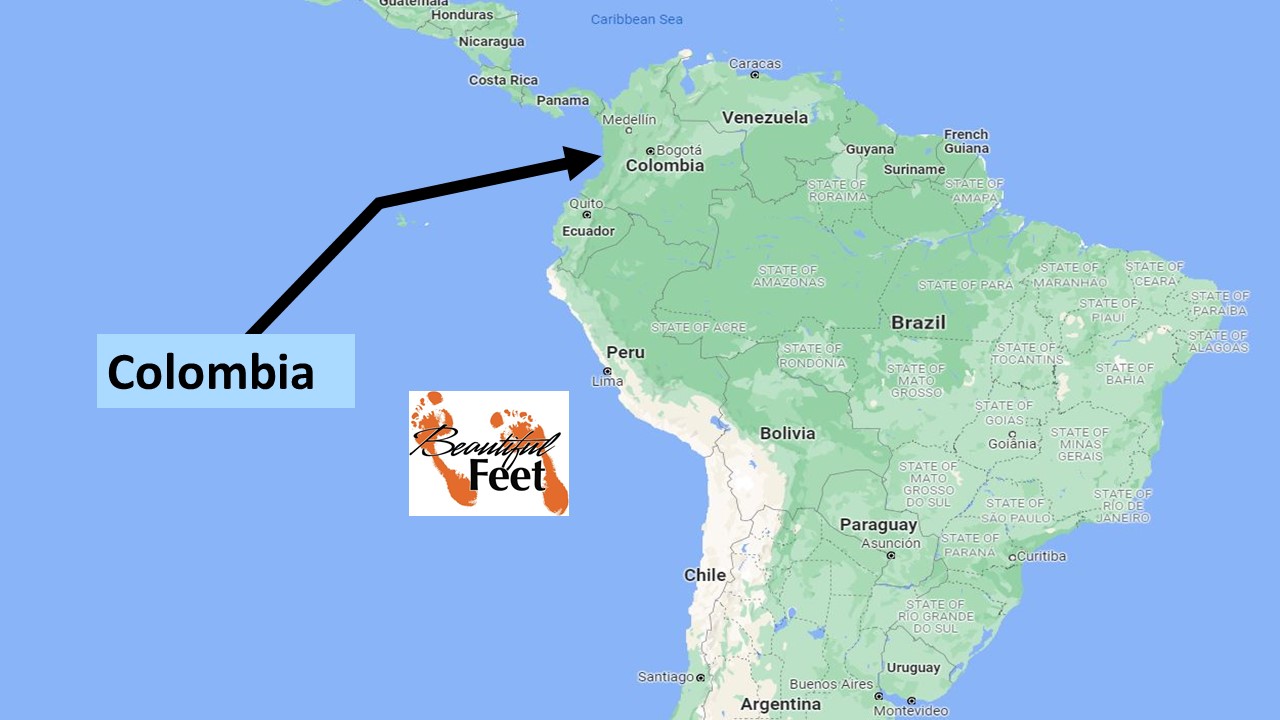
Introduction
As with all revivals, there is always a notable “spark” that initiates the sequence of events leading to the revival. In the 1995 Cali Revival, it appears that the spark was Julio Cesar Ruibal.
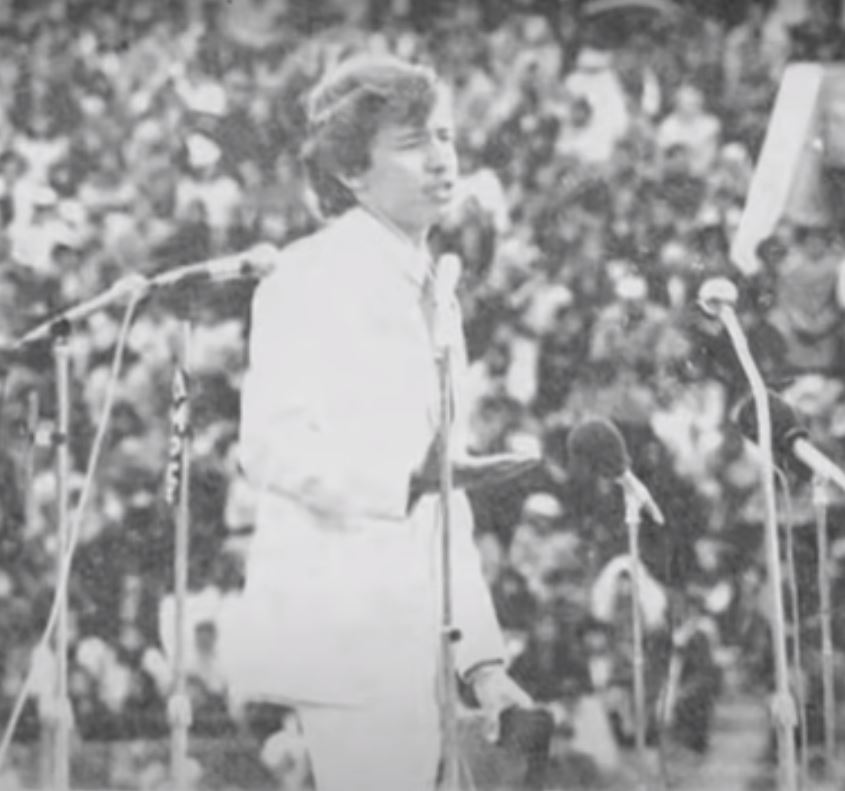
Julio Ruibal, preaching at an evangelistic event in Bolivia (c. 1975)
Julio Ruibal had been highly successful in evangelistic work in Bolivia during the early to mid 1970s. This involved evangelistic events in stadiums wherein many healings and miracles occurred. In 1978, Ruibal had relocated to Cali, Colombia, and started the church, Ekklesia Centro Cristiano Colombians (Ekklesia Colombia Christian Center).
It was at this time that a group of evangelical pastors formed ASMICEV (Evangelical Christian Minister’s Association of the Valley). Ruibal was part of its formation and helped write the bylaws.
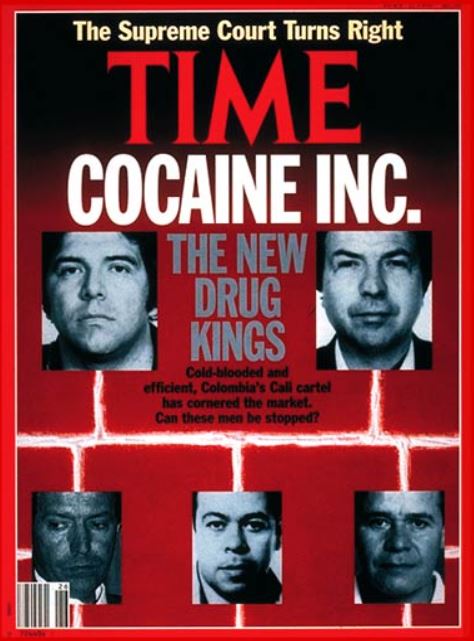
Time magazine cover, July 1, 1991
The Condition of Cali, Colombia: “The Most Violent Country in the World”
► Colombia had been the world’s largest exporter of cocaine, sending between 700 and 1,000 tons a year to the United States and Europe alone ($500 million in exports per month).
► The drug cartel controlled the country. It was the richest and most well-organized criminal organization in history.
► Kidnappings and torture were commonplace, and up to 15 murders were occurring per day.
► Bribery controlled the banks, businesses, justice system, police, political system, and anti-drug units.
► Evil proliferated in all areas.
► Drug money was laundered through businesses owned by the drug cartel.
Condition of the Churches
► There were only 50,000 Christians out of a population of about 2 million.
► Though not fighting, the churches were not walking in unity.
► Churches would cooperate with and assist in city-wide events, but after they were over, they went back to business-as-usual.
► Churches worked independently with their own programs.
► Society saw the church as being weak and fragmented.
► With few professionals attending the churches, they were considered to be made up of poor, uneducated, and deceived people.
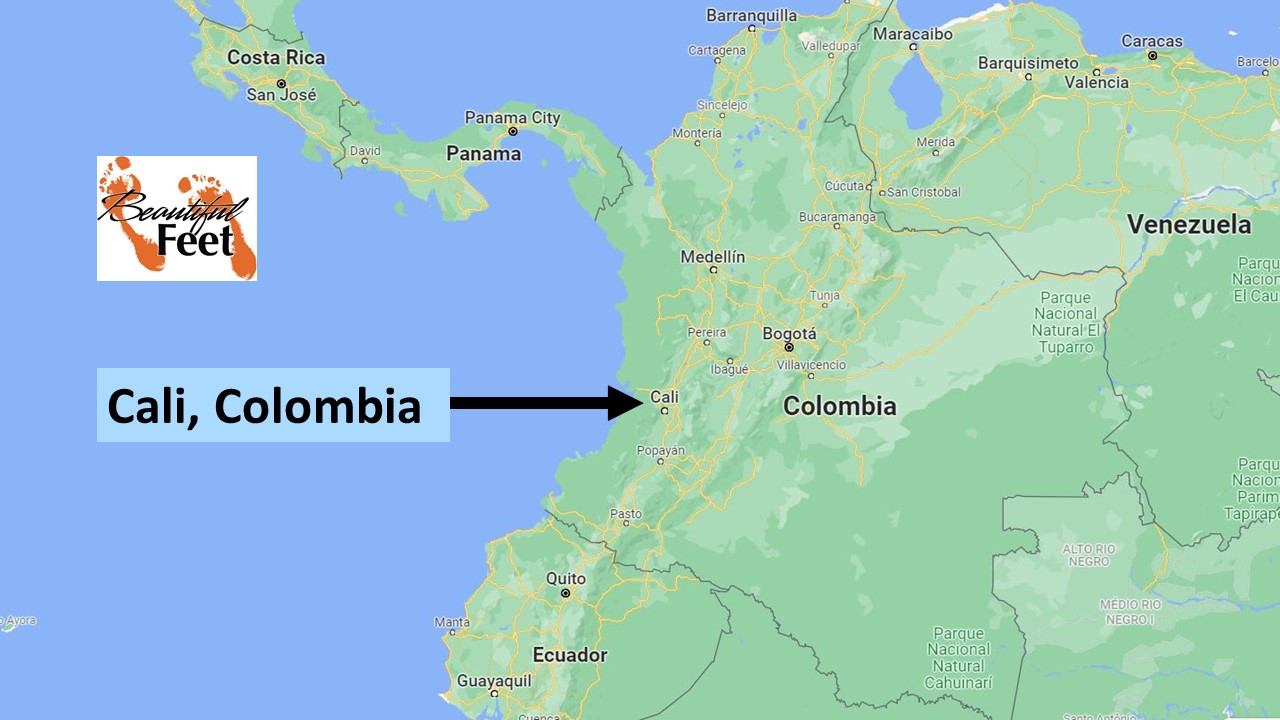
Extraordinary Prayer
This revival is noted for its all-night prayer vigils that occurred in the civic center and stadium in the city of Cali. The numbers that attended these events at times exceeded their capacity (at times up to 60,000 people). This shows the desperation that was resting on the relatively few Christians in that city.
A group named “1,000 Trumpets” was formed. This was a group of intercessors made up of 2-3 people from different churches. They met for prayer every Saturday, and then during the week those people would spread throughout the city leading many other prayer meetings.
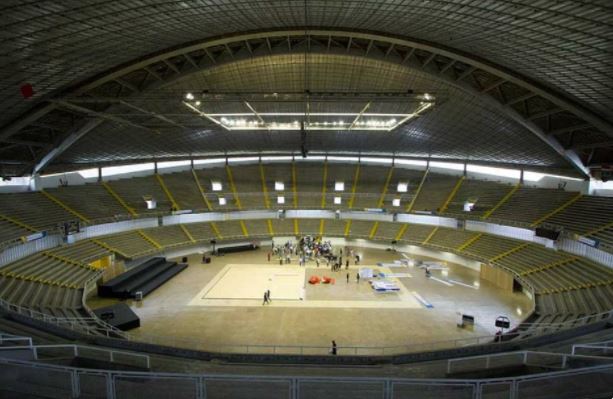
Cali’s Civic Auditorium: Colisco El Pueblo
What Happened
First All-Night Prayer Vigil: In March 1995 the ministerial association planned their first all-night prayer vigil in the city’s civic auditorium, the Colisco El Pueblo. The organizers had no planned agenda and, only expecting around 2,000 people, they were ill-prepared for the more than 25,000 that came (nearly half of the city’s evangelical population at that time!).
One startling result of the prayers from those 25,000, was that 48-hours following the event, the headline from the newspaper El País read: “No Homicides!” For the first time in as long as anybody in the city could remember, 24 hours had passed without anyone being killed. Prior to this, 15 people were killed every day.
Another result following the first prayer vigil, as read in a newspaper headline: “The First Drug Lord Has Fallen.” Corruption also took a major hit during the following four months, when 900 cartel-linked officers were fired from the city’s police force.
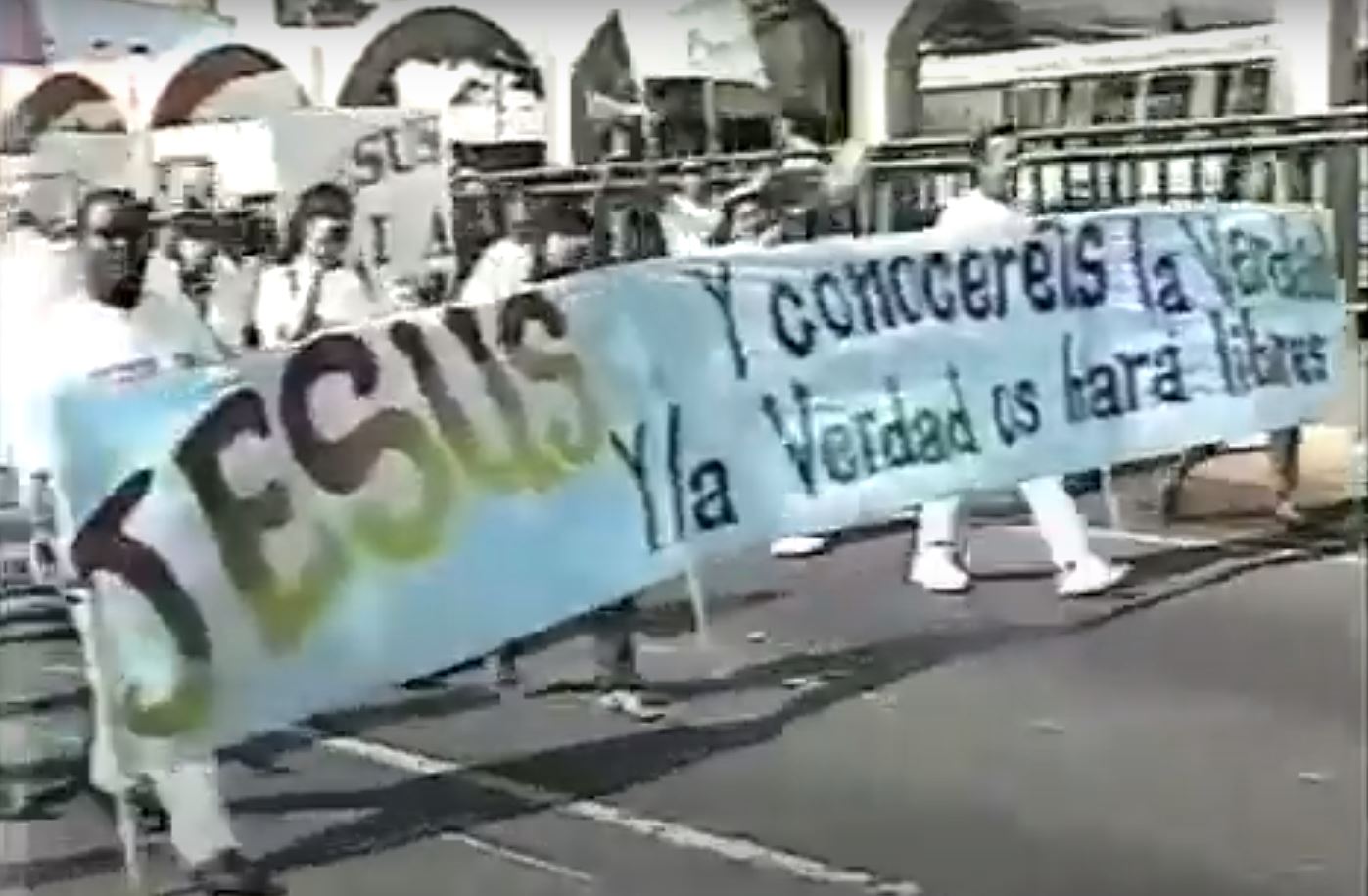
March for Jesus
March for Jesus (30,000 people joined)
In 1995 the city churches united for a “March for Jesus,” and there were 30,000 that came out to support this parade through the streets.

Prayer vigil in the stadium
All-Night Prayer Vigil in the Stadium: With the stadium being much larger than the coliseum, the ministerial association secured that venue for subsequent prayer events, which occurred every three months, and the results were astounding.
The mayor of Cali, with its population of about 2 million people, was present to give an official greeting at a prayer vigil, and shortly after the 9pm opening, the stadium lost electrical power, and everything went dark. The people in attendance didn’t panic; they simply gathered in small groups and began praying, while others broke out in songs, praising God.
With the mayor witnessing the calm, and being highly impressed, he addressed those assembled after the power returned 1.5 hours later, by proclaiming: “Cali belongs to Jesus Christ!”
Julio Ruibal then preached on this evening, gave an invitation for people to place their faith in Jesus for their salvation, and between 4,000 and 5,000 responded. At this same time there were also many notable miracles: deaf ears opening, a boy getting up out of his wheelchair, and others leaving their canes behind.

Purging of Evil
Through the summer of 1995, the government came down hard on the drug cartel. In addition to the police force being purged of 900 cartel-linked officers, Colombian authorities had captured all seven targeted cartel leaders – Juan Carlos Arminez, Phanor Arizabalata, Julian Murcillo, Henry Loaiza, Jose Santacruz Londoño and founders Gilberto and Miguel Rodríguez Orejuela.
The history of the city was beginning to change, and the churches were stepping from being cooperative to becoming truly united.
Death Threats
As the movement continued, those in power felt threatened, and they attempted intimidation with theft, as well as physical attacks. Ruibal hired a bodyguard, but when a presidential candidate was executed, even though he had 14 bodyguards, Ruibal knew had to place his faith in God, and he came to believe that he would not die until his purpose on earth had been accomplished.
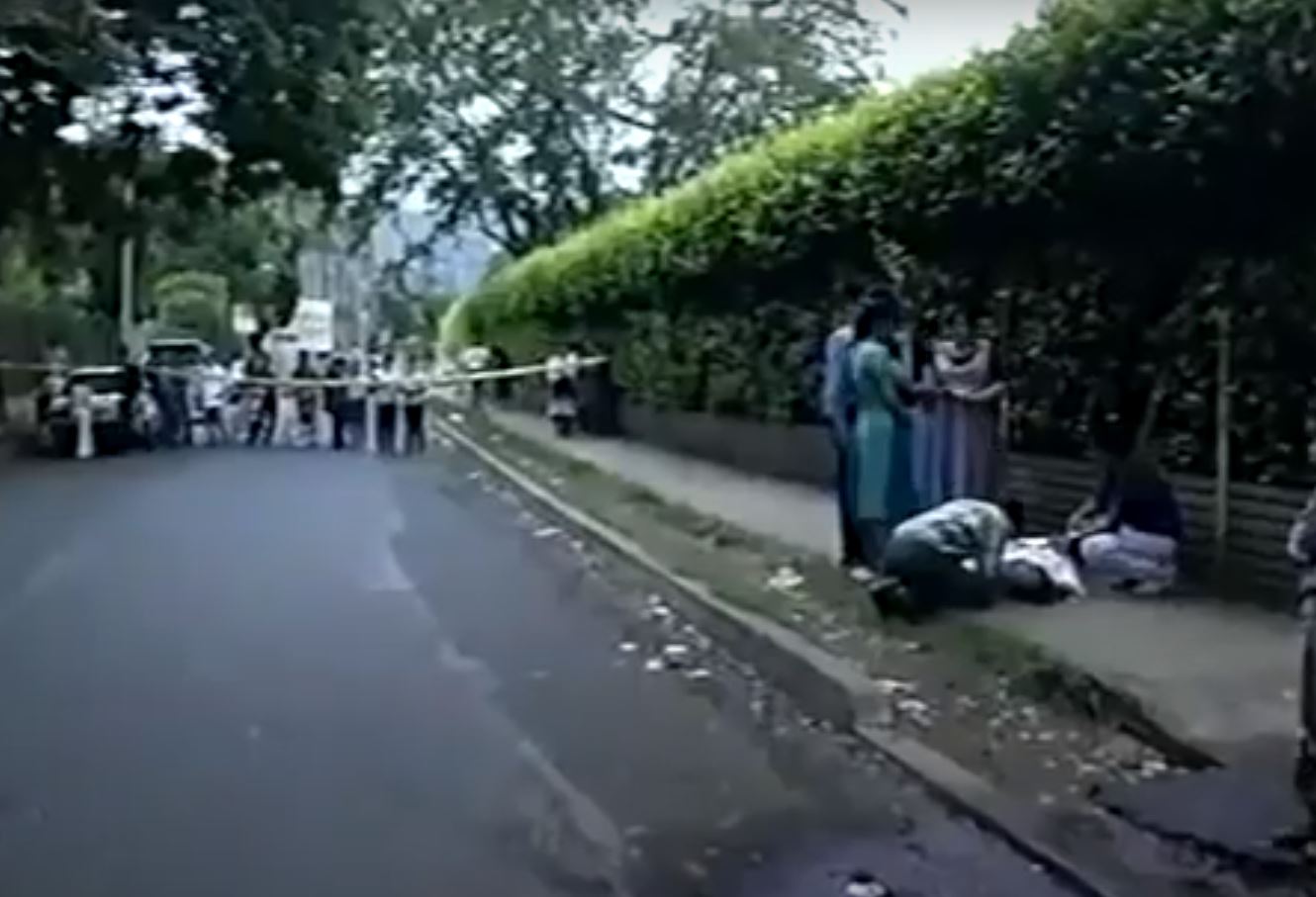
Julio Ruibal laying on the sidewalk after his martyrdom
Martyrdom
On December 13, 1995, while going to a ministerial association meeting, Julio Ruibal was shot, resulting in his immediate death.
The entire city of Cali was moved by this slaying, and newspapers, television stations, and radio programs carried the news of his death for days. One article was entitled,
They Killed the Last Living Saint!
Martyrdom Resulted in Intense Unity
Attending Ruibal’s funeral were 1,500 people, and after the service had concluded many pastors went to the side and said,
Brothers, let us covenant to walk in unity from this day forward. Let Julio’s blood be the glue that binds us together in the Holy Spirit.
Following this covenant of unity, signed by around 200 pastors, the churches were more unified than ever, and this led to the city’s high-profile prayer vigils and a common vision for the city.
Strategy for Church Growth
When pastors were asked to define their strategy and planning for the church growth they began to experience, they responded:
We don’t have time to plan. We’re too busy pulling the nets into the boat.
In early 1998, one church, Christian Centre of Love and Faith, had nearly 35,000—with church growth coming almost entirely from new believers.
Jesus Was the Talk of the Town
The hunger for God had permeated the entire city. You could hear conversations about the revival on buses, in cafés, markets, and homes. Wherever people were gathered, the revival was the center of everyone’s attention.

The stadium at one of the all-night prayer vigils
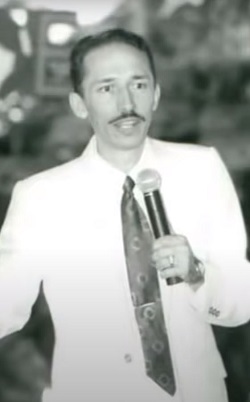
Julio Ruibal
Results of the Revival
► As the kingdom of God descended upon Cali, a new openness to the gospel could be felt at all levels of society. No longer viewed as being only for the uneducated and poor, the events now drew prominent members of society, with their wealth and influence.
► The mayor asked the churches to participate in the FÉRIA (fair), to provide Christian music and preaching to counteract this event known for its debauchery and drunkenness.
► Denominations resistant to unifying now began to participate during events.
► The prayer vigil at the stadium in 1998 drew 60,000 people, exceeding the stadium’s capacity. Those not able to gain entry started prayer meetings outside.
► During 1998, the number of churches increased by 50%. They grew from 214 to over 300 churches.
► The ministerial association had government approval for the first Christian TV station, which went on the air in August 2000.
► Local churches were reporting an increase in attendance.
► Because of the number of new converts, churches found it difficult to disciple new believers adequately.
► The city government initiated a pro-family project and asked Christians to manage it.
► The stadium was offered to be used for prayer vigils without charging rent.
► The Church was invited to meetings with government officials to discuss major problems facing the city.
► A worship team was assembled from different churches to be used for city-wide events.
► A city-wide youth group was developed.
► Evangelistic teams were assembled from among the churches.
► Teams made up of about 800 men worked to oversee the logistics of conducting prayer vigils in the stadium.
► The State University Hospital, which had previously been closed to Christian ministry, allowed ministry teams to come in and pray with the sick, resulting in many healings.
► Mission outreaches were conducted by the churches. One notable location was in Potosí, Bolivia, where, during the summer of 2001, 80% of the population in that town was reached with the gospel. There were 35,000 decisions for Christ—20% of the population. That was just one example of the outreach that was conducted by the united Church in Cali.
Sources
► The Cali Transformation by George Otis, Jr.
► The Marks of Genuine Revival by J. Lee Grady
► Unity in the Spirit by Ruth Ruibal
Video
► Transformations: A Documentary by The Sentinal Group
► Transformations in Cali, Columbia by Marc Joshua
Return to List of Revival Stories
Chet & Phyllis Swearingen
(260) 920-8248
romans1015@outlook.com
Beautiful Feet
P.O. Box 915
Auburn, IN 46706

